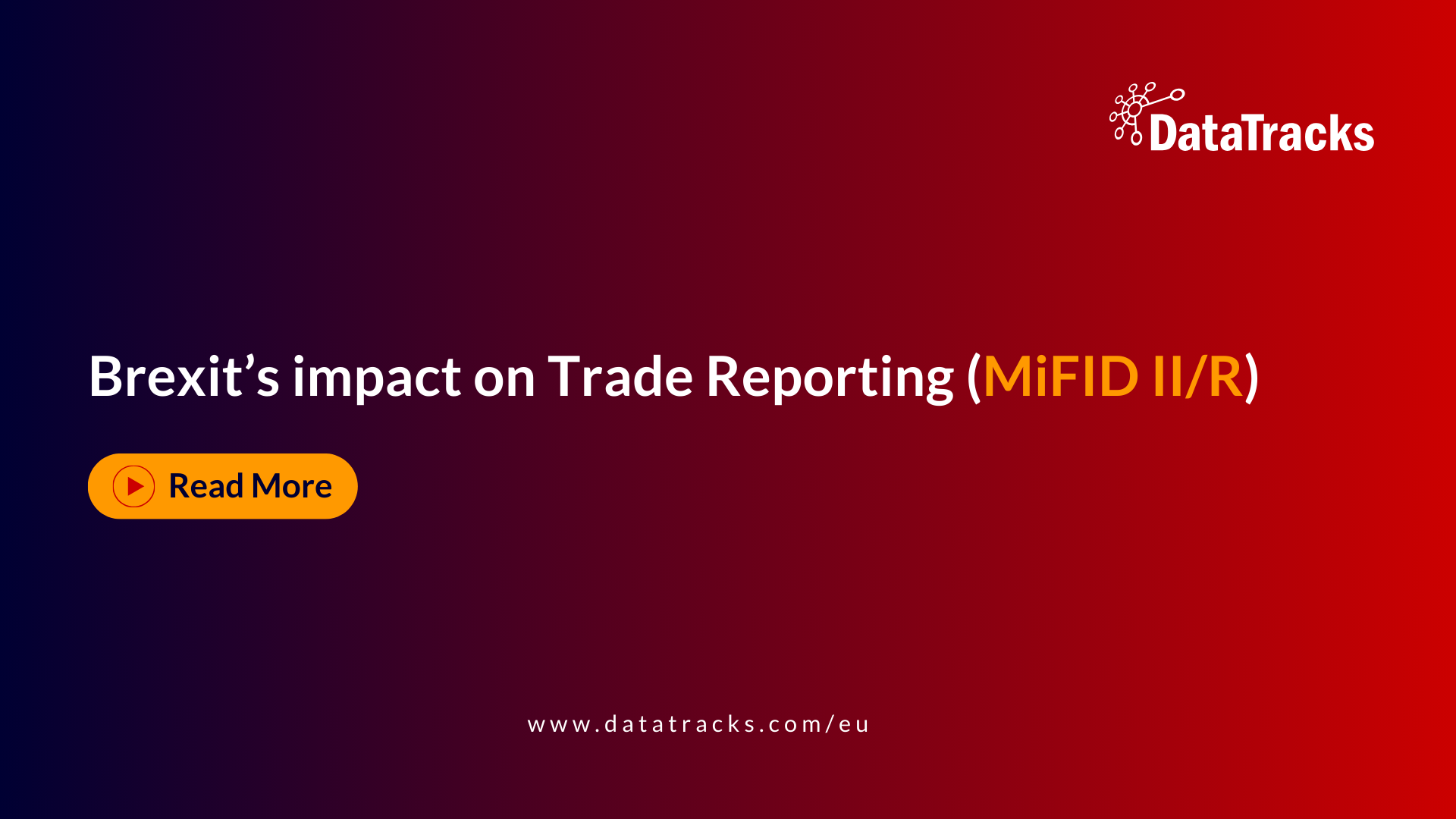Comprehensive Guide on MiFID II Product Governance
The revised Markets in Financial Instruments Directive (2014/65/EU) (MiFID II) that is due to take effect from 3rd January 2018 is set to usher in a wide range of new and sweeping reforms that are aimed at improving the competitiveness of financial markets and increasing the degree of harmonised protection for investors throughout the European Union (EU). As part of these reforms, the new ‘Product Governance’ requirements are aimed at putting in place a strong and robust framework for the way financial services firms (including discretionary investment managers) manufacture and distribute products.
Overview: MiFID II Product Governance Rules
Article 16(3) of MiFID II specifies that Investment Firms that are manufacturing Financial Instruments for sale to clients must maintain, operate, and review a process for the approval of each Financial Instrument, as well as significant adaptations of existing Financial Instruments, prior to them being marketed or distributed to clients. This product approval process must not only specify an identified target market of end clients within the relevant category of clients for each Financial Instrument, but it must also ensure that all relevant risks to this identified target market of end clients are assessed, and that the intended distribution strategy is consistent with the identified target market.
Investment Firms must also put in place review procedures so that they can regularly review Financial Instruments to ensure that they take into account any event that could materially affect the potential risk to the identified target market, and also to assess whether their Financial Instruments remain consistent with the needs of the identified target market. This includes an assessment of whether the intended distribution strategy of the Investment Firm remains appropriate. If an Investment Firm is manufacturing Financial Instruments it must make available to all distributors all appropriate information on each Financial Instrument and the product approval process, including the identified target market of the Financial Instrument.
Under Article 24(2) of MiFID II Investment Firms that are manufacturing Financial Instruments intended for sale to clients must also ensure that those Financial Instruments are designed to meet the needs of an identified target market of end clients within the relevant category of clients. These Investment Firms must ensure that they understand the Financial Instruments they offer or recommend, they assess the compatibility of the Financial Instruments with the needs of the clients to whom they provide Investment Services, and they also take account of the identified target market of end clients.
One of the objectives of the new product governance rules is that Investment Firms only offer or recommend Financial Instruments that are in the interest of the client. This new product governance framework for Investment Firms will certainly require widescale changes to existing internal systems in order to ensure that those systems can effectively identify target markets and ensure compatibility with a client’s investment profile. However, in light of numerous mis-selling scandals (e.g. Endowment Mortgages, Payment Protection Insurance, Over-the-Counter Derivatives) the new product governance rules are a welcome new addition to the financial investor protection framework in the EU.
Comprehensive Guide on MiFID II Product Governance
MiFID II planning and implementation is a top priority for asset managers affected by European regulations, presenting both challenges and opportunities. The new product governance requirements apply to investment firms involved in creating, developing, issuing, and distributing financial instruments, structured products, and investment services.
Applicability
Investment Firms
- Manufacturers: Firms that create, develop, issue, and design financial instruments.
- Distributors: Firms that distribute financial instruments, structured products, and investment services, including individual portfolio management.
Review and Assessment
Investment firms are required to review the products they manufacture, distribute, or recommend. This includes:
- Target Markets: Assessing the appropriate target markets for each product.
- Client Types: Evaluating the types of clients for whom the products are suitable.
Legislative Background
On 13 May 2014, the Council of the European Union formally endorsed a new regulatory regime to replace the current Markets in Financial Instruments Directive 2004/39/EC (MiFID). The new legislation, in the form of Directive 2014/65/EU (MiFID II) and Regulation 2014/600/EU (MiFIR), was scheduled to be implemented into UK law on 3 January 2018.
Product Governance Requirements
Articles 16(3) and 24(2) of MiFID II
These articles outline specific product governance requirements for investment firms:
- Manufacturers: Firms that manufacture financial instruments must ensure their products are designed to meet the needs of an identified target market.
- Distributors: Firms offering or recommending financial instruments or investment services must act in clients’ best interests during all stages of the product or service lifecycle.
Objectives
The primary aim of the product governance rules is to enhance investor protection by:
- Ensuring that manufacturers and distributors of financial instruments and structured products act in clients’ best interests.
- Promoting responsible behavior throughout all stages of the product or service lifecycle, from creation to distribution and recommendation.
Who Do the New Product Governance Rules Apply To?
Investment Firms
The new product governance requirements apply to:
- Manufacturers: Investment firms that create, develop, issue, and/or design financial instruments.
- Distributors: Investment firms that distribute financial instruments, structured products, and investment services, including individual portfolio management, to clients.
Dual Role Firms
- Firms Involved in Both Manufacturing and Distribution: These firms must apply both sets of requirements, ensuring compliance in both creating and distributing financial instruments.
AIFMs and UCITS Management Companies
- AIFMs and UCITS Management Companies: Although typically outside the scope of these rules, they are affected due to the requirements placed on distributors.
- Investment Firm Collaborations: Firms, including those not subject to MiFID II, that collaborate in manufacturing financial instruments must define their product governance responsibilities in a written agreement.
Third Country Investment Firms
- Marketing Through EEA MiFID Firms: Third country investment firms marketing financial instruments through an EEA MiFID investment firm are also subject to these governance rules.
FCA’s PROD Sourcebook
- Non-Binding Guidance: The FCA’s PROD sourcebook applies these rules as non-binding guidance to UK AIFMs and UCITS management companies, encouraging them to adhere to similar standards.
Product Governance Requirements for Manufacturers under MiFID II
Product Approval Process
Manufacturers of financial instruments must:
- Develop and Review: Maintain, operate, and review a product approval process for each financial instrument before marketing or distribution.
- Staff Expertise: Ensure that staff involved in manufacturing possess the necessary expertise to understand the characteristics and risks of the financial instruments.
Target Market Identification
Manufacturers must:
- Identify Target Market: Specify the types of clients for whom the financial instrument is suitable at a granular level, and identify groups for whom it is not suitable.
- Considerations: Use both qualitative and quantitative criteria to identify the target market, considering:
- Client type (retail/professional/eligible counterparty)
- Client knowledge and experience
- Financial situation and loss-bearing ability
- Risk attitude
- Client objectives and needs
Manufacturers may base this assessment on theoretical knowledge and experience if they do not have direct contact with end clients.
Distribution Strategy
Manufacturers must:
- Consistency: Ensure the distribution strategy aligns with the identified target market.
- Distributor Selection: Select distributors whose client types and services align with the target market of the product.
- ESMA Guidelines: Follow ESMA guidelines to favor sales to the relevant target market.
Information for Distributors
Manufacturers must:
- Provide Information: Make all relevant information about the financial instrument, product approval process, and suitable investment services available to distributors.
- Enable Understanding: Ensure distributors understand the financial instruments to distribute them properly.
Regular Review
Manufacturers must:
- Assess Consistency: Regularly review financial instruments to ensure they remain consistent with the needs of the target market and that the distribution strategy remains appropriate.
- Review Frequency: Determine the regularity of reviews based on factors such as the complexity or innovation of the financial instrument.
- Distributor Feedback: Require distributors to provide information on sales, including sales outside the target market or distribution strategy, and post-sales reviews.
Conflicts of Interest
Manufacturers must:
- Manage Conflicts: Establish procedures to ensure proper management of conflicts of interest, including remuneration.
- Analyze Conflicts: Analyze potential conflicts of interest each time a financial instrument is manufactured.
- Design Integrity: Ensure that the design of financial instruments does not adversely affect end clients or market integrity.
Product Testing
Manufacturers must:
- Assess Risks: Undertake product testing to identify the risks and circumstances that may lead to poor outcomes for end clients.
- Negative Conditions: Evaluate the financial instruments under negative conditions, such as a deteriorating market, to ensure resilience and suitability.
Charging Structure
Manufacturers must:
- Clarity: Ensure the charging structure for the financial instrument is clear to target investors.
- Return Expectations: Assess whether the charges undermine the product’s return expectations.
- Compatibility: Ensure that the charges are compatible with the needs, objectives, and characteristics of the target market.
Product Governance Requirements for Distributors under MiFID II
Understanding Financial Instruments
Distributors must:
- Know the Instruments: Understand the financial instruments they distribute to clients.
- Assess Compatibility: Evaluate the compatibility of financial instruments with client needs, considering the manufacturer’s identified target market.
- Act in Clients’ Best Interests: Ensure that financial instruments are distributed only when it is in the best interest of the client.
Target Market
Distributors must:
- Develop and Assess: Create their own target market for financial instruments and assess this market independently, in addition to carrying out a suitability or appropriateness assessment when providing investment services.
- Consider Key Categories: Use the same categories as manufacturers (as per ESMA guidelines) to identify the target market. Consider factors such as:
- Client needs and risk profile
- Impact of charges
- Financial strength and reliability of the manufacturer
- Concrete Definition: Define the target market more concretely than manufacturers, incorporating this assessment into their decision-making process for services and products offered.
- Portfolio Approach: When providing investment advice or portfolio management, distributors can use products for diversification and hedging, even if some products fall outside the target market, as long as the overall portfolio is suitable for the client.
- Dual Role: If a firm acts as both manufacturer and distributor, only one target market assessment is needed.
Distribution Strategy
Distributors must:
- Define Strategy: Establish their own distribution strategy based on their client base and the types of investment services they offer.
Information from the Manufacturer
Distributors must:
- Obtain Information: Gather necessary information from manufacturers to understand the financial instruments they intend to distribute.
- Adequate Arrangements: Have arrangements in place to obtain information on products and approval processes, especially when distributing products not manufactured by themselves.
- Comply with Requirements: Take all reasonable steps to comply with the requirements, including obtaining sufficient information from non-MiFID manufacturers.
- Information Transfer: Ensure that product information is passed along the distribution chain to the final distributor and that manufacturers receive information on product sales from end distributors.
Regular Review
Distributors must:
- Ongoing Review: Regularly review the financial instruments they distribute and the investment services they provide.
- Event-Driven Assessment: Consider any events that could materially affect the potential risk to the identified target market.
- Consistency Check: Ensure that financial instruments or investment services remain consistent with the needs, characteristics, and objectives of the target market.
- Appropriate Actions: Take appropriate actions if the target market is wrong or if the financial instrument or service does not meet the target market’s needs, such as reconsidering the target market.
Moving Forward for Investment Firms
Review Existing Products
Investment firms should:
- Assess Current Offerings: Review the financial products they currently manufacture, distribute, or recommend.
- Evaluate Target Markets: Assess the respective target markets and client types for each product to ensure alignment with MiFID II requirements.
Distribution Agreements
- Include Obligations: Ensure that distribution agreements, including any sub-distribution agreements, contain obligations for distributors to provide sales information. This will enable product manufacturers to conduct thorough product reviews.
- Information Sharing: Include requirements for product manufacturers to provide detailed product information to distributors, facilitating compliance and proper distribution.
Collaboration in Product Manufacturing
- Implement Agreements: Firms collaborating in product manufacturing should determine the necessary agreements to ensure clear responsibilities and compliance with MiFID II product governance requirements.
- Define Responsibilities: Clearly outline each party’s responsibilities in the agreements to maintain regulatory compliance and ensure the integrity of the product lifecycle.
By taking these steps, investment firms can ensure they are compliant with MiFID II product governance requirements, maintaining transparency and protecting investor interests.
DataTracks EU offers advanced MiFID II reporting solutions that help investment firms comply with complex regulatory requirements efficiently. By leveraging DataTracks’ robust software, firms can ensure accurate data management, streamline their reporting processes, and stay compliant with MiFID II obligations, ultimately safeguarding their operations and enhancing investor protection.
If you would like to receive further information on our MiFID II expertise and solutions please email DataTracks at: enquiry@datatracks.eu.
Frequently Asked Questions (FAQs) on MiFID II product governance
What steps should investment firms take to comply with MiFID II product governance requirements?
Investment firms should review the financial products they manufacture, distribute, or recommend, assess their target markets and client types, and ensure distribution agreements include obligations for distributors to provide sales information. Firms collaborating in product manufacturing should implement agreements outlining each party’s responsibilities.
How should distributors approach target market identification under MiFID II?
Distributors need to develop their own target market for financial instruments, using information from manufacturers and their knowledge of their client base. They should consider client needs, risk profiles, the impact of charges, and the financial strength of the manufacturer, conducting this assessment as part of their decision-making process.
What are the responsibilities of manufacturers regarding product approval under MiFID II?
Manufacturers must maintain, operate, and review a product approval process for each financial instrument before marketing or distribution. This includes identifying the target market, assessing risks, developing a consistent distribution strategy, and ensuring staff have the necessary expertise to understand the instruments’ characteristics and risks.
How can distributors ensure they distribute financial instruments in line with MiFID II requirements?
Distributors must obtain necessary information from manufacturers to understand the financial instruments they intend to distribute, ensuring alignment with the needs, characteristics, and objectives of the target market. They must also define their own distribution strategy and regularly review the financial instruments and services they provide.
How does DataTracks assist investment firms with MiFID II reporting?
DataTracks provides advanced mifid reporting solutions that help investment firms manage the complex regulatory requirements efficiently. Their software ensures accurate data management, streamlines reporting processes, and supports firms in staying compliant with MiFID II obligations, ultimately enhancing investor protection.




